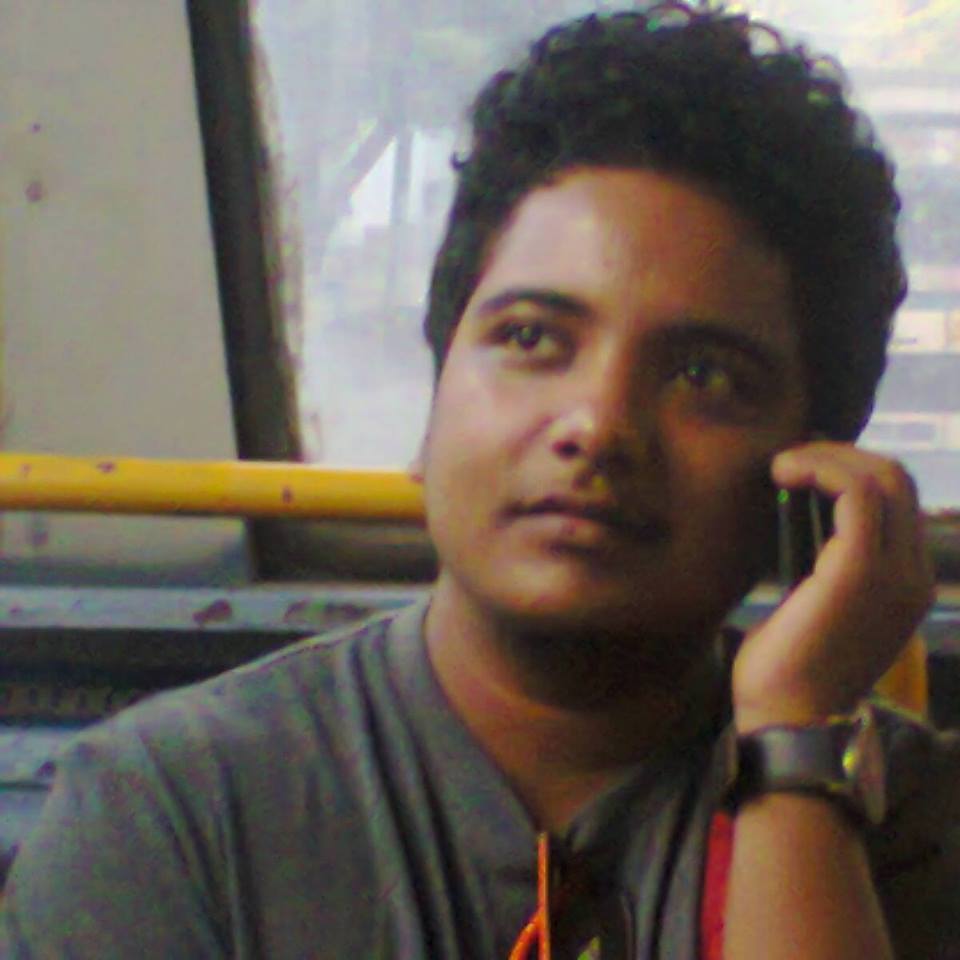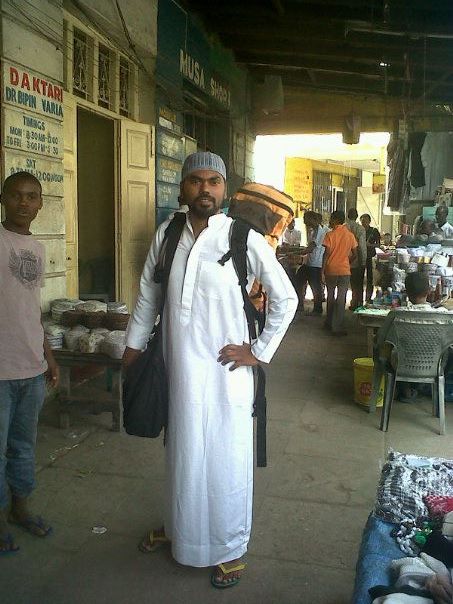Gee Imaan Semmalar
 “In my judgment, it is useless to make a distinction between the secular Brahmins and priestly Brahmins. Both are kith and kin. They are two arms of the same body, and one is bound to fight for the existence of the other.” ~ Babasaheb Ambedkar, Annihilation of Caste, 1936.
“In my judgment, it is useless to make a distinction between the secular Brahmins and priestly Brahmins. Both are kith and kin. They are two arms of the same body, and one is bound to fight for the existence of the other.” ~ Babasaheb Ambedkar, Annihilation of Caste, 1936.
Babasaheb Ambedkar, with characteristic foresight has already called the bluff. The bluff of the secular activist, the casteless writer, the anti-caste, Brahmin publisher. Anything that I write will pale in comparison to the clarity of thought, the depth of understanding, the political knowledge of just that one quote of his and I would not in my wildest, most arrogant moment even attempt to make such a comparison. I would like to, at the very outset list out my identities, because I believe in the power of self-representational identity politics. Savarna born. Fledgling Ambedkarite by choice. Transman. Anti-national with no citizenship rights at the moment. Atheist. This is my avial of privileges and “authentic victim” status.
I thought about whether it is appropriate for me to write at this juncture. After consulting dalit friends and intellectuals about what they thought politically, I feel compelled to, for several reasons. To make this more than a debate between fanatic dalit voices and conscientious savarna ones, to make the point that this debate is not savarna vs dalit. But between Ambedkarites resisting the attempt at cultural and intellectual appropriation of Babasaheb and “secular”, civil society activists attempting to, advertently or inadvertently, intelligently or stupidly, cunningly or naively to do just that.
I have heard in several spaces savarna people making the argument that dalits and their supporters are too quick to judge, we haven’t even read Arundhati Roy’s introduction. Reading or not reading is not the point. For the mass of dalit-bahujans who hold Babasaheb so dearly, the world of letters is still a distant dream. They bring their dear Babasaheb alive through stories that are told to their children as they sleep hungry at night, through songs that are sung about the might of Bhim, through pictures that are drawn with charcoal on cracked walls. Will you ever be able to take that Bhim to your savarna readership? All your attempts at appropriation will fail because that is where he resides- in the hearts, actions, politics and lives of Ambedkarites.

“I have never hankered for publicity, and if I may say so, I have more of it than I wish or need” ~ A reply to Mahatma by Dr. Ambedkar, appendix of AOC
I saw photos of the book launch at India Habitat Centre. Babasaheb looks scornfully from the background at the proceedings. Arundhati Roy is too busy signing copies of his treatise against her to notice. Anand, the publisher, is too busy bringing Dr. Ambedkar to the India Habitat Centre audience to notice. It was with great sadness and rage that I saw the violence done to a great leader who very clearly said in his own introduction to the same text, “I have no desire to ascend the platform of the Hindus, to do within their sight what I have been doing within their hearing”. So what is the purpose of Arundhati Roy’s introduction, longer than the actual text of Dr. Ambedkar’s speech, the publisher’s annotations, the multi city launches, the interviews, the signing of copies, the posturing, the posing?
What political need is there to forcefully and violently bring Gandhi to the introduction when he was in the original text, placed in the appendix by Dr. Ambedkar himself? What is the need to title an introduction as “The Doctor and the Saint” instead of just calling it an “Introduction”? What is the need to tempt, seduce, cajole, trick savarna readership into buying Annihilation of Caste when it has been in print since 1936 in different Indian languages for a fraction of the cost? What is the need for a savarna writer introducing and making more palatable to a savarna readership, a seminal text written about the destruction of the caste system? Is the Navayana edition of an untouchable text written by an “untouchable” being made touchable for savarna readership through the mediation of a touchable introduction by a touchable, booker prize winning star? If for 80 years, savarna readership has ignored this treatise written against them by the greatest leader of modern India, the first law minister of independent India, the man behind drafting the Constitution, political thinker par excellence, awe inspiring social commentator, passionate learner and teacher of the masses for the sole reason that he was dalit, the loss is theirs. They needn’t “take the trouble”, like Roy has, to read him. They also needn’t take the trouble to make use of any of their constitutional rights either, since the constitution was also drafted by the same dalit leader whose texts are untouchable to you without savarna mediation.
Really, if Arundhati Roy really thinks she took “the trouble” to read him, I wish she hadn’t. She doesn’t have the humility, the political sense to realise she has done nobody but herself a favour by reading him. The fact that she arrogantly says she has “taken the trouble” to read him amounts to glorification of her own privilege and is casteist. Though, how much of him she has understood, is unfortunately, questionable. For someone who has such a control over the English language this is surprising. So it is something else that makes her misquote and misunderstand what Babasaheb has said. She misquotes Dr.Ambedkar who talked about the graded nature of inequality of the caste system, only to erase her own position and give herself legitimacy.
Roy has committed a political blunder by writing the introduction. I will not go into the factual errors, the political issues, overt and covert casteism in the introduction right now.
However, Roy has outdone her introduction to Annihilation of Caste in her response to Dalit Camera. Political blunders are forgivable, we have all made them and continue to make them. But she has been unapologetically casteist in her response to Dalit camera. That is not forgivable.
She has very gently brushed aside all political objections to her introduction with a “you disagree, you dislike”. She has not so gently trivialised a serious resistance to intellectual appropriation, to using the Annihilation of Caste for the perpetuation of the very system that it is a stinging critique of, as “nothing more” than a somewhat acrimonious debate. Savarna saviours have historically taken it upon themselves to emancipate, speak for and write about dalits and other oppressed peoples. How can she not see that she perpetuates the same savarna saviour syndrome when she arrogantly introduces the greatest modern leader of anti-caste movements in India and she says, “I was writing for those in India, and as well as outside, who are new to the subject, for whom caste is just some exotic Hindu thing”. The irony of an anti-imperialist crusader whose career as a writer has always catered to white audiences is not lost on anyone.
What names we are given, how we are raised, what languages we speak, what dialects and intonations we use, where we shit, who we fuck, what we eat, who we marry, who we are friends with, who works for who, what kind of work we do, who speaks, who listens, every choice, every decision, every privilege of our savarna selves are determined by caste. Roy also admits this in her introduction. Why is it then, that only when caste is used by dalits to assert and question representation that they are cautioned against such essentialist identities? Is woman also an essentialist identity? Alternately, if a cis gendered, savarna man made an argument that the category of savarna woman is essentialist and he insists on writing the introduction to a book on patriarchy, would that be acceptable to cis gendered, savarna feminists?
She should know better than to ask Dalit Camera what they would do if tomorrow Gujarati banias say only they can write about Gandhi. Why would Ambedkarites care if banias write or do not write about Gandhi? What a twisted reversal of the question to make a mockery out of identity politics. It sounds suspiciously like the reverse racism argument made by white people when called out on being racist or occupying space that is not theirs. Why don’t we ask this question instead – why didn’t you do a comparative analysis between Gandhi and Dr.Ambedkar and expose “the saint” in an introduction to Hind Swaraj? Nobody disagrees that it is politically important to expose the misogyny, casteism, racism etc of Gandhi’s positions to the world. But that could have been done in so many ways other than angering the very sections you claim to stand in solidarity with. “What if Mahars say that their understanding of Ambedkar is more authentic and more radical than that of other Dalits”, she asks. Dalits have read, translated, enacted plays on, sung about and followed Babasaheb Ambedkar’s ideals for several decades now, I seriously doubt if tomorrow they would make stupefying, jaw dropping arguments like the one only Roy seems capable of making!
Why is it that these dalit intellectuals have not protested in the same way when Eleanor Zelliot, Jaffrelot or Gail Omvedt have written about dalits or the Ambedkarite movement? Or when Dhananjay Keer who was of the bhandari caste wrote the biography of Babasaheb? Clearly, she is wilfully oversimplifying the question of representation. At one point, in her pointless casteist response to Dalit Camera, she even implicitly questions Dr.Ambedkar writing about Sikhs, Muslims, adivasis etc. We condemn this, not because he is a thinker who cannot be questioned, but because you and I have no merit to arrogantly ask that question about someone who has spent his entire life in the pursuit of knowledge, engaging with and learning about struggles that are not his own, while struggling so much himself.
As an anti-caste radical pointed out in one of the responses to Roy, in 1994, in her review of Shekhar Kapur’s film, Bandit Queen, Phoolan Devi was just a “woman” who had been raped and portrayed on film without consent. Not a dalit woman. Roy had a dalit character in her novel who in all probability, didn’t make caste a less “exotic Hindu thing” for her white audience. Where is your engagement with caste? We ask again. Have you, while walking with them or talking to them, questioned why the leadership of the radical Marxists have no adivasi, dalit representation? Have you questioned the casteism of Gandhian movements against big dams you claim to have been part of? “How can any non-dalit be part of a dalit movement when you will not even concede that they have the right to engage with Ambedkar?” You have not engaged with Ambedkar, that is the charge against you. To write an introduction to Babasaheb’s Annihilation of Caste, you have to, at the very minimum, be an Ambedkarite and have engaged with his writings, his ideals and movements that follow his lead.
Roy is not Dalit, not Hindu, she is secular, she is pro-poor, anti-dams, anti-globalisation, Marxist, pro-adivasi, booker prize winning writer; a celebrity, savarna media loves her, savarna progressives look up to her. But is she an Ambedkarite? Or does she show some aspects of Gandhian charity? “Why would I spend so much time reading what he wrote, and writing this introduction, just in order to patronize him?” No, she has nothing to gain out of writing this introduction because she is already famous and obviously not doing it for money, so dalits should be grateful to her for “taking the trouble” to read Dr. Ambedkar and being so kind as to bless them with this introduction. No criticism will be entertained, it’s a self sacrificing moment of a new age mahatma, be grateful!
She says everytime she writes about big dams, nuclear bombs, corporate globalisation, she is accused of not being a displaced person, a bomb expert or an economist. But big dams, nuclear bombs and corporate globalisation are issues not identities. If someone points out the fact that she makes use of globalisation or corporate publishers to sell books, her response would have to address the hypocrisy involved in her stands. After all, comrade Arundhati Roy, even her strongest critics must admit, does sell products better than anyone else. If adivasis say tomorrow, we are all not one, do not contribute to ethnographic projects about us, we do not want to be beautiful photos or exotic people in your book and don’t give royalties on our behalf to benevolent charitable trusts like she did in 2009, would she say, they are being essentialist and identitarian? Would she say, there is no limit to how many books can be written about adivasis? Wait, maybe she will!
About dalit intellectuals being called names, she nonchalantly says, “I’m sure I’d be among the finalists in the race for the most insulted people”. For someone who I am sure is familiar with the tenet “the personal is the political” used by second wave feminism in the West (yes, I am essentialising the West), why does Roy take political questions as personal insults? How can she equate her individual, celebrity burden to that of the historical burden of insults that Dalit communities carry and have carried for centuries? Can Roy really not see that the insults are casteist? You are dalit, you haven’t read enough, you cannot question savarna regimes of truth, you are intolerant, you have no sense of humour, you are over sensitive, SC STs and OBCs are corrupt but creative etc. It is the anxiety towards neo educated dalits questioning in the same language as the savarnas use, talking back to you, occupying the same spaces as you, that is making savarna liberals and media so angry about valid political criticisms. Why is Roy getting so defensive about the question of competence? Is she above criticism? Is she the goddess of all things, big and small?
Why is it that casteless secular progressives who are publically pro reservation react with such aggression when asked by dalit intellectuals and activists to prove their competency or merit? It’s very revealing, the reactions to the reversal of this burden of merit. Every time dalits assert themselves they are called “foot soldiers of identity politics”, “brokers of victimhood”and now Arundhati Roy throws one more into the simmering cauldron of names- “authentic victims”. I know many will jump to her defense and say she clearly says, “issue of authentic victim” and did not actually call dalits that. Language is slippery and we savarnas have gotten away with more blatant casteism using the right to freedom of speech, so I am sure you will this time too.
In the concluding paragraphs of Annihilation of Caste, Babasaheb says, “The intellectual classes to whom the masses look for guidance are either too dishonest or too indifferent to educate them in the right direction. We are indeed witnesses to a great tragedy”. No matter how many more introductions are written, the caste, class, intellectual, social, cultural power of all of them will not match hers. Why else is Caravan and Outlook not reporting the voices of dalit intellectuals, writers, activists and only focussing on her voice? That is the power of her arrogance when she says more knowledgeable people should go ahead and write more introductions and that hers is just one among many. It’s true that this edition will not match the circulation of that of the small, dalit publishing houses but it will, because of the power differential, create national debates, have glitzy book launches, numerous interviews etc where the focus will be Roy’s introduction or her voice. It is precisely because of the power imbalance of Navayana publishing and Arundhati Roy introducing that makes it much more than a “gesture of a brahmin annotating the text and a non-dalit introducing it” as Anand claimed in his speech at the India Habitat Centre launch of the edition. Knowledge production, distribution and consumption are very powerful enterprises and have historically been the caste occupation of Brahmins. This so called “gesture”, hence goes against the very principle of the annihilation of caste.
In her response,she has asked how she has perpetuated caste by writing the introduction. Here are some ways you have- your mother Mary Roy is a teacher, the principal of one of the most elite private schools in Kerala.You are a writer. You are working within your caste occupation and getting publicity for being pro-dalit by using a treatise written against Brahmanical savarnas such as yourself. You guard the gates of knowledge production typically like your caste fellows. You have made a polemic text that was not palatable to caste Hindu reformers in 1936 till now, more palatable by lending your name to it, you have brought Gandhi from the appendix (where he was placed by Dr.Ambedkar) to the introduction, to the title; you do not see your own position as someone who has blood on her hands from the caste system, one can bet underpaid dalitbahujan labour (a dhobi, domestic worker, Mali, driver) gave you the free time to read to whatever limited extent you have, Dr. Ambedkar’s texts.
In her response to Dalit Camera to clarify the cancellation of the Hyderabad launch of the book which was rumoured to be due to dalits stopping it, she feeds into the construction of the fanatical dalit. The SMS she quotes says, “Save Ambedkar writings. Oppose Navayan publication. Annihilation of Caste is our holy book. Arundhati Roy and Anand. S contaminated it. Participate in the protest on 9th March at Sundaraiah Vigynana Kendram, Hyderabad.” Saying it could be anyone, even non-dalits who have sent this anonymous SMS to anonymous recipients in the next paragraph makes no difference. The damage is done already. Besides, which non-dalit would think of the Annihilation of Caste as a holy book? If that was true, what is the need for the Navayana edition to take it to non-dalit readership? The whole thing is absurd. So what is so fearsome about a protest even if it was planned? Do dalits have no right to assemble or protest?
She says the only special thing about the Navayana editions are the annotations. A self effacing moment where the bouquet is handed over to S. Anand. So, are we then to believe that the annotations of Sanskrit shlokas and other footnotes by a Brahmin publisher is worth Rs 525? Selling traditional caste knowledge through amazon.in. How creative. How corrupt. Wonder what Ashis Nandy would say.
Anand asks in his speech at the IHC launch in Delhi, “do we keep Ambedkar confined to Samyak, Gautam and Dalit Murasu and thousands of such dalit platforms”. Ambedkar looks confined on that stage in India Habitat Centre but he is free in dalit platforms, when he is understood, followed, revered, worshipped, admired by Ambedkarites. Free from the kind of assault and appropriation he faces in savarna forums. Ambedkar is not a sun that illuminates all alike, whether dalit or non-dalit. Savarna houses with potted plants and artificial lighting draw the curtains on the sun. Ambedkar is not universal like the sun, he has a special place for Ambedkarites that cannot be appropriated. The ideals of liberty, equality and fraternity that Ambedkarite politics is influenced by, may have universal appeal for people interested in the pursuit of justice and truth. But people who listen to grasshoppers and not allies, who write books on power politics, but don’t admit how they might be involved in the politics of power themselves will not be able to see the light.
“Gandhi thwarted Ambedkar at every step” Roy says. No Ambedkarite would ever say something that is so untrue. Dr. Ambedkar thwarted Gandhi at every step, exposed him for the fraudulent reformer he was, led the biggest religious conversion in the history of the world, gave even his enemies their constitutional and fundamental rights and much more. Ambedkarite sons, daughters and transpeople have thwarted Gandhians, the right wing, the left, the secularists by being true to his ideals. The resistance to the Navayana edition of AOC is the voice of the Ambedkarites speaking truth to power. I am sorry you have reacted with such casteist arrogance to the criticism to your introduction, you cannot be an ally if the people you are attempting to make an alliance with, reject you.
Can caste be annihilated? Not unless we show the courage to question our saviours in whatever form they appear. Not unless those savarnas who call themselves revolutionary are just enough to break structures of oppression we benefit from, not unless we learn to live, love, fuck and marry beyond caste barriers, not unless we are humble enough to admit that however much those of us who have caste privilege try, we will make mistakes and sometimes not see until we are called out on it, not unless we apologise and check ourselves tirelessly for internalised brahminism, not unless we listen more and talk less, learn more and teach less, not unless we move out of our caste professions, not unless we find a cure for this sickness together.
“Caste is not a physical object like a wall of bricks or a line of barbed wire which prevents the Hindus from commingling and which has, therefore, to be pulled down. Caste is a notion, it is a state of the mind. The destruction of Caste does not therefore mean the destruction of a physical barrier. It means a notional change”- Babasaheb Ambedkar, Annihilation of Caste, 1936.
~
My deepest gratitude to all my dalitbahujan friends(literate and “illiterate” who have taught me, criticised me and made me a sharper Ambedkarite than I would have ever been, had I only read books. Jai Bhim!
Please also read other articles on the same issue:
Flaunting noble intentions, nurturing caste privileges : by Asha Kowtal
The Question of Free Speech: by Vaibhav Wasnik
Arundhati Roy replies to Dalit Camera
An Open Letter to Ms. Arundhati Roy: by Dalit Camera
Vedic Chants for the 21st Century
Arundhati Roy’s ‘Introduction’ to Ambedkar: Inside one Misogynistic & Xenophobic Dalit’s mind: by Anoop Kumar
The Judge, the Jury and the Goddess: by Akshay Pathak
Resisting a messiah: by Anoop Kumar
An Introduction to Anoop Kumar’s “Misogynistic and Xenophobic Rants”: by Vinay Bhat
~~~
Gee Imaan Semmalar is a savarna trans man who is out of work and lives with his mother in Kerala at the moment. He is a full time trans feminist and student of anti caste politics. He can be reached at gee.ameena@gmail.com for criticisms, hate and support mails.










